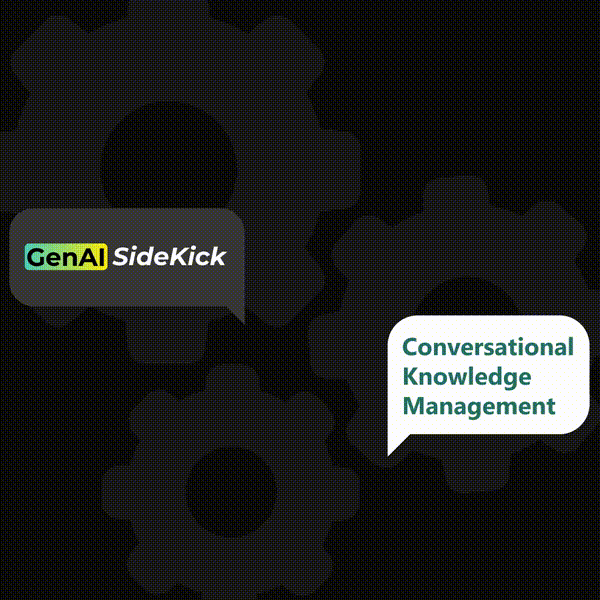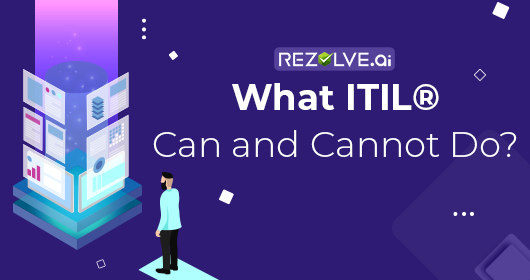Heading
Is Your IT Service Management Ready for 'Return-to-Office' Shift?
The global workforce has witnessed a profound transformation over the past few years. The concept of traditional office-based work has been redefined, ushering in the era of remote work. An impressive 90% of businesses plan to implement policies for the return-to-office transition by the close of 2024, as reported in an August survey conducted by Resume Builder, which involved 1,000 company leaders.
But amidst all the talk about redesigning workspaces and reestablishing in-person collaboration, a crucial aspect often remains in the background - the readiness of your IT service management. The IT service desk is the unsung hero of any organization. It's the first line of defense when technological hiccups occur and the place you turn to for troubleshooting, technical support, and sometimes, even a friendly chat. With the shift back to the office, is your IT service desk prepared to tackle the unique challenges of this transition?
This blog explores the considerations, strategies, and best practices to ensure your IT service desk is ready for the 'return-to-office' shift.
Navigating A Dynamic Work Landscape
The workplace landscape has seen remarkable shifts in recent times. Flexible schedules, remote work, and the rise of the gig economy have supplemented the conventional 9-to-5 office grind. This revolution was accelerated by the global pandemic, which pushed companies and businesses to adapt to remote and hybrid work cultures quickly. As the calendar turns to 2024, the world gradually recovers from the pandemic and several other workplace challenges like Great Resignations, rising inflation or recession, and a growing desire to return to in-person work.
To begin, there's not a universally applicable 'one-size-fits-all' approach for the return to the office. While many companies have fully embraced remote or in-person work, some are still exploring a middle ground, opting for more flexible hybrid work policies.
Additionally, employees now have an active voice in this discussion. They've had the opportunity to experience remote work, carefully weighing the advantages and disadvantages it brings to their work-life balance. With the substantial increase in post-pandemic job changes, companies are finding the need to adapt to employees' evolving preferences rather than expecting employees to conform to traditional norms.
Lastly, employees have developed new expectations for a satisfactory digital experience. As the boundaries between work style and location blur, aspects like hybrid meetings, the adoption of videoconferencing tools, hotdesking, and enhanced security compliance have become crucial. Effective digital employee experience management is a cornerstone of any organization's return-to-office strategy.
Why is streamlined IT Service Management (ITSM) crucial for the return to the office?
The ever-evolving work landscape marks a move from working at home to returning to the busy office, and IT service management is leading the way in this transformation. It's essential because it helps employees return to the office comfortably and do their job well. Let's take a closer look at how it plays a crucial role in making this shift successful:
Personalization
A modern IT service desk excels in personalization, crafting solutions tailored to individual employee needs. For instance, if an employee struggles with specific software, the service desk can provide targeted guidance or even arrange additional training, ensuring a smoother transition during the 'return-to-office' shift.
Round-The-Clock Technical Support
The IT service desk is like the 24/7 emergency hotline in an office setting. Employees who encounter issues like malfunctioning devices or software glitches turn to the service desk for immediate assistance. A quick response from the service desk can mean the difference between an employee getting back to work in minutes or facing hours of frustration.
Instant Incident Resolution
Efficient incident management is vital for seamless operations. Imagine an employee's computer suddenly crashes right before a crucial presentation. A well-crafted ITSM solution swiftly troubleshoots the issue, resolves it, and ensures the presentation proceeds without a hitch, minimizing downtime and productivity loss.
Streamlines Operations and Adapts to New Technologies
With the 'return-to-office' shift, the IT service management solution is crucial in adopting new technologies. For instance, if a new video conferencing system is introduced, the service desk ensures employees are trained and can effectively use the technology. This adaptability and support are crucial for a smooth transition.
Elevate Employee Productivity
Consider an employee whose computer is slow due to software issues. A modern ITSM solution promptly resolves the problem, allowing employees to focus on their core tasks and maintain productivity. This quick response keeps operations running smoothly, preventing work bottlenecks.
Boost Customer Engagement
The IT service desk isn't just about solving technical issues; it's also about creating a positive user experience. For instance, if an employee has trouble accessing a critical application, a responsive service desk helps them promptly, improving satisfaction and fostering engagement with IT services.
Better ROI
Investing in a proficient IT service management tool pays off in numerous ways. Imagine a scenario where technical issues disrupt a critical project, leading to financial losses. A capable service desk minimizes such disruptions, maximizing the efficiency of IT resources and translating to a better return on investment.
Effective Communication
A modern AITSM tool acts as a vital communication bridge. For example, when an organization implements new security protocols, the service desk ensures that employees are informed and understand the changes. This transparent communication reduces confusion and resistance to changes.
Continuous Improvement
Think of the IT service management platform as a constant learner. It identifies areas for improvement through feedback and data analysis. For instance, if employees consistently face challenges with a particular software, the service desk might initiate a training program to address this issue, ensuring that the organization's technology functions optimally and evolves continuously.
What are the Challenges for ITSM Solutions?
The advent of the 'return-to-office' shift can bring specific challenges to your IT service desk. These hurdles can make the transition less smooth, so we must pay close attention and develop intelligent solutions to ensure a triumphant return to the office. Let's explore these challenges in more detail:
Increased Support Requests
The return to the office may lead to a surge in IT support requests. Employees accustomed to remote work may encounter new issues when working on-site.
On-Site and Remote Support
Balancing on-site and remote support can be challenging. IT service desks must determine when in-person assistance is required, and remote support suffices.
Security Concerns
The shift to the office may require adjustments to security measures. The IT service management plays a crucial role in educating employees about cybersecurity and ensuring compliance with new security protocols.
Hardware and Software Compatibility
Different work environments may require different hardware and software configurations. IT support agents must address compatibility issues when transitioning from remote work to the office.
Training Needs
Employees returning to the office may require training in using office technology and equipment. The IT helpdesk should be prepared to provide this training.
Tips to Ensure ITSM Readiness
As the 'return-to-office' transition draws near, the IT service desk is central in facilitating a seamless shift. Its significance lies in its capacity to bridge the gap between the past and future of work. This pivotal responsibility has complexities, requiring the service desk to be prepared for many considerations, ensuring employees can smoothly transition back to the office environment.
You can implement the following strategies to address the challenges, ensuring readiness of your IT service desk:
Assess the Current State
Start by evaluating your current ITSM solution. Are there enough staff to handle increased on-site support requests? Are they adequately trained for the transition? Do you have the right tools and technologies in place? Assess your staffing, training, tools, and infrastructure to identify gaps and areas for improvement.
Clear Communication
Effective communication is a crucial pillar of a smooth transition. Inform employees about the 'return-to-office' plan and the role of the ITSM in this process. Provide guidelines for requesting IT support, response times, and any changes in IT support procedures. Make sure employees are aware of any office layout or infrastructure changes.
Technology and Infrastructure Readiness
Ensure that all on-site employees have the necessary devices and are correctly configured. Keep all software up to date to prevent compatibility issues. Test and optimize the office network to handle increased traffic and reinforce security measures.
Anticipate Common Issues
Be proactive in addressing common issues that may arise during the transition. Password resets, hardware failures, connectivity issues, software compatibility problems, and training needs are all aspects that should be considered and planned for in advance.
Employee Training and Support
Organize training sessions to familiarize employees with new technology, software, or equipment in the office. Develop user manuals and self-help resources to empower employees to resolve minor issues independently. Consider offering walk-in support for those who prefer face-to-face assistance.
Feedback Mechanism
Implement a feedback mechanism to gather input from employees about their IT support experiences. This feedback can help identify areas that need improvement and ensure that the IT service management (ITSM) tool continues to evolve to meet the organization's needs.
The Verdict
Returning to the office is a significant shift post the pandemic. It's a bridge between the familiarity of the past and the flexibility of the future. Your IT service management solution (ITSM) is vital to this transition, serving as the first line of defense against technology challenges and disruptions.
Integrating Generative AI into your IT helpdesk equips it with the ability to adapt and navigate this transitional voyage with even greater precision, ensuring a seamless 'return-to-office' expedition.
Just as a skilled captain relies on sophisticated navigation tools to navigate uncharted waters, your modern ITSM software employs advanced insights to anticipate and address evolving challenges and opportunities, ultimately leading your organization to thrive in this transformative era of work.





530x280%201.png)


.png)